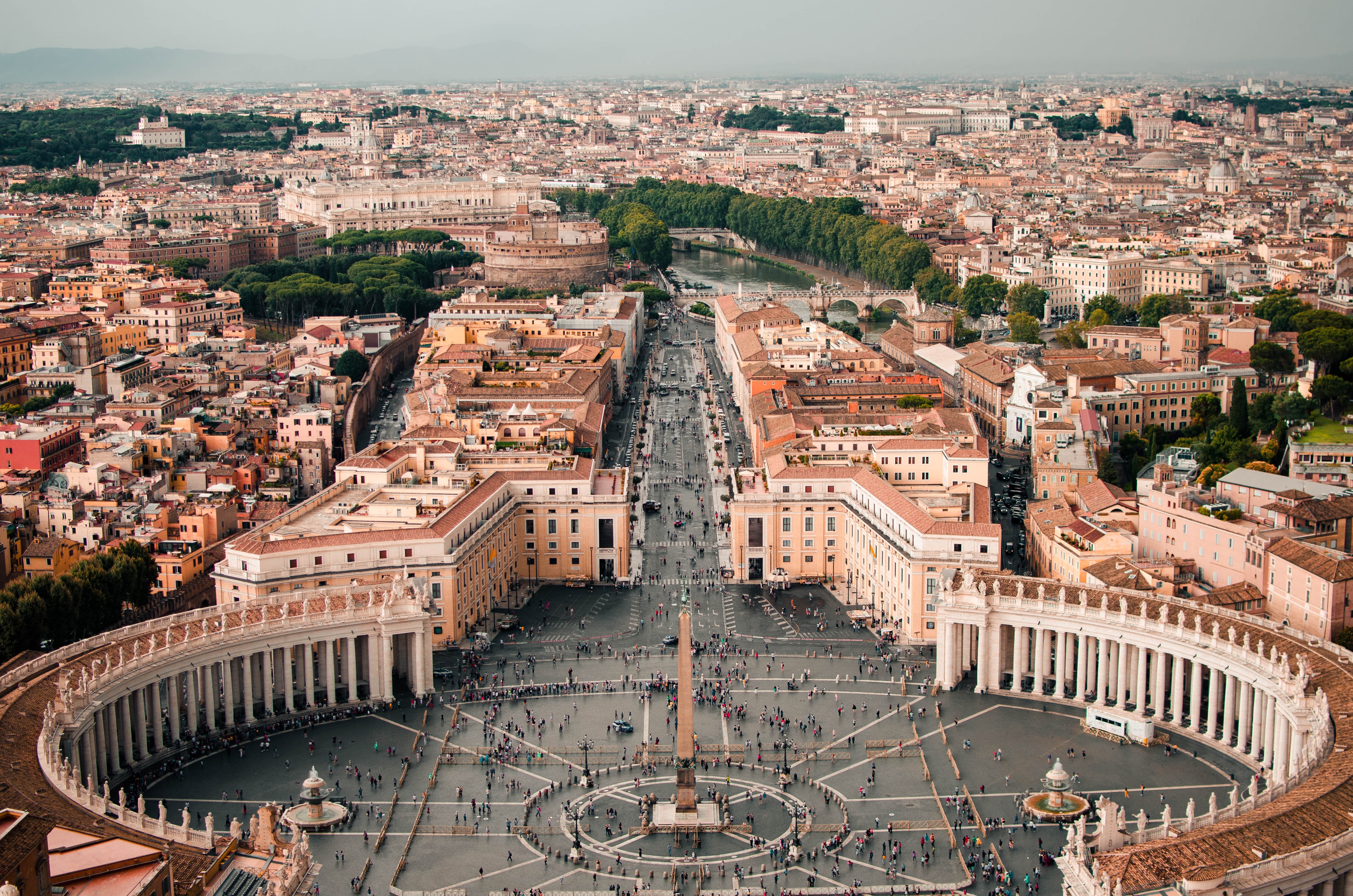The main attractions of Rome: 10 places to visit
Rome is not only the capital of Italy, but the cradle of Western civilization, the eternal city, a place that in the world has no equal in history, art and culture. Founded (presumably) in 753 BC, during its existence it was the capital of the Roman Empire, the world center of Christianity, the place that saw the birth of the Latin language and, in more recent times, the ideal of Italy as a place of beauty, as a country dedicated to the cult of carefreeness that Fellini told well in the Dolce Vita (not for nothing set in Rome). To visit the city in every corner and district would probably take years, if not decades, but for those who can only stop for a weekend, here are the main attractions of Rome not to be missed!
1.The squares
Rome is probably the city with the most beautiful squares in the world. The most famous (after Saint Peter’s Square, which belongs to the Vatican State) is perhaps Piazza di Spagna. It’s a spectacular and elegant place, dotted with boutiques and cafes and protagonist with its famous staircase, the so-called Spanish Steps, of various films and the social life of the city.
Another important square for the city is Piazza Navona: its peculiar oval shape is due to the fact that here once stood the Stadium of Domitian. Today it’s decorated by a large Roman obelisk and the imposing Fontana dei Quattro Fiumi, a monumental work by Bernini.
Finally, Piazza del Popolo is another of the nerve centers of Rome, visible in its entirety from the viewpoint of the Pincio at the end of the gardens of Villa Borghese. At the center of the square is the oldest obelisk in Rome, and in it converges a triangle of streets known as the Trident. A peculiar feature of the square is the presence of two twin churches, the Church of Santa Maria da Montesanto and that of Santa Maria dei Miracoli.
 2.The Trevi Fountain
2.The Trevi Fountain
Together with the Colosseum, the Trevi Fountain is the symbol of the eternal city in the world. Made immortal by Federico Fellini in an iconic scene of La Dolce Vita (in which Anita Ekberg invites Marcello Mastroianni to dive with her), the Fountain is the largest in Rome, a work that takes on its current appearance around 1700 but has much older origins. It’s always crowded with tourists, but a visit to flip a coin over the monument (and make sure you’re lucky) is a must.
3.The Colosseum and the Imperial Fora
The Colosseum is one of the seven wonders of the world, and by visiting it it’s not difficult to understand why. Its name is actually Flavian Amphitheatre, and its history of gladiatorial arena is more or less known by everyone. What perhaps few know is that the Amphitheater (the largest in the world) housed not only the fights between beasts and gladiators, but also the so-called naumachie, or the reconstructions of naval battles. Today the monument still has a decadent charm that perfectly embodies the history of the people and the city that promoted the construction.
The Imperial Fora is instead an architectural unicum in the world, a suggestive walk among the ruins of the political center of ancient Rome. The Fora are five and are a series of monumental squares in succession, the result of the enlargement of the ancient Roman Forum in the imperial age. Together with the Colosseum and the Imperial Fora, you can not miss a visit to the Palatine, one of the seven hills of Rome and now an archaeological park that houses the ruins of the palaces of the emperors and ancient temples.
 4.Vatican City
4.Vatican City
The Vatican is the smallest state in the world both in population and in extent: it’s in fact a city-state, formally born in 1929, in which power is entirely in the hands of the Pontiff of the Catholic Church, which administers it as an absolute monarchy. In its small size, however, the Vatican contains an unparalleled number of masterpieces. Its nerve center is St Peter's Square, embraced by a spectacular travertine colonnade, which opens on the homonymous Basilica and seat of papal power. The interior of the Basilica and the adjacent Vatican Museums hold a priceless collection, with works by Bernini, Michelangelo, Canova, Raffaello, Giotto and Caravaggio.
The highest artistic expression of the Museums can be found, however, in the Sistine Chapel, a work by Michelangelo that welcomes thousands of visitors a day, used as the seat of the papal conclave but known above all for the Last Judgment, a masterpiece of immense value.
5.Trastevere
Trastevere is the most picturesque district (or, as they say in Rome, rione) of the city. As the name suggests, it is located on the banks of the Tiber, connected to the other side by Ponte Sisto. Here, day and night, citizens and tourists gather in its squares to drink, taste Roman specialties, play music and have fun. Among its narrow and colorful streets you can breathe the true Rome and a bohemian lifestyle, embodied well by the bars and taverns that crowd the streets of Trastevere.
6.Campo de' Fiori
Craft shops, markets, perfumes and (of course) flowers. Campo de' Fiori is a square that every morning, from Monday to Saturday, hosts a huge city market, and in the evening it becomes one of the epicenters of Roman nightlife. Here, in 1600, Giordano Bruno was executed on charges of heresy, but he was not the only one to suffer that fate: the square has a bloody past as a place for executions. Today of those tragedies remains a monument that portrays the philosopher, dedicated to free thinkers. The square is the only one in Rome on which there are no churches or basilicas, but the bars where you can enjoy happy hour are many, as well as restaurants where you can enjoy typical Roman dishes, such as saltimbocca, carbonara or Jewish artichokes.
7.The Pantheon
Among the tourist attractions in Rome one can not miss the Pantheon, the monument symbol of ancient Rome, as well as the best preserved. It’s a temple initially built by Agrippa, but rebuilt after a fire by Emperor Hadrian around 120 AD. The monument houses not only the great sleeps of the rulers of Italy, including Vittorio Emanuele II and Margherita di Savoia, but also of illustrious artists such as Raffaello Sanzio. Worthy of note is its coffered dome, larger than even that of San Pietro, a masterpiece whose center opens an oculus of over 8 meters that allows the beams of natural light to enter and illuminate the monument.
8.The Vittoriano
Inserted in the context of imperial Rome and more precisely on the hill Campidoglio (the one on which, according to legend, was founded Rome) the Vittoriano is a monument to the Italian Risorgimento that stands on Piazza Venezia. Commissioned by the Italian Parliament at the end of 1800, the building honors the memory of Vittorio Emanuele II, Sovereign of Italy who died shortly before the beginning of the works. Of the complex stands out the Altare della Patria, a patriotic altar that includes ornamental elements to symbolize the values of the Italian people and a statue dedicated to Rome, under which the body of the unknown soldier was placed. The Vittoriano also includes the equestrian monument dedicated to Vittorio Emanuele and the panoramic terraces from which to enjoy the view of the city.
9.Villa Borghese
Third largest park in Rome (and the most frequented), Villa Borghese is a green lung that combines neoclassical elements with baroque, English gardens and Italian gardens. In its extended spaces it contains lakes, woods, fountains, statues, but above all works of art. These can be found both in the Museo e Galleria Borghese (which houses masterpieces such as Paolina Borghese by Canova, Sacred and Profane Love by Tiziano e Apollo and Daphne of Bernini) and in the Museum Carlo Bilotti, which houses in its collection of contemporary art works by artists such as Warhol and De Chirico. In Villa Borghese there is also the Belvedere del Pincio, a terrace that offers a spectacular view of Piazza del Popolo.
10.Castel Sant'Angelo
An imposing building wanted by the Emperor Hadrian as a mausoleum for himself and the family, Castel Sant'Angelo in its history has been a funerary monument, fortification, prison, Renaissance residence – even housed Michelangelo within its walls – and finally a museum. It’s located not far from the Vatican and is a place much loved by the Romans for its scenic architecture and the homonymous bridge, which crosses the Tiber and is a destination for evocative walks at sunset or on sunny days.
Do you want to visit Rome with us? We have many tours that could be perfect for you!



